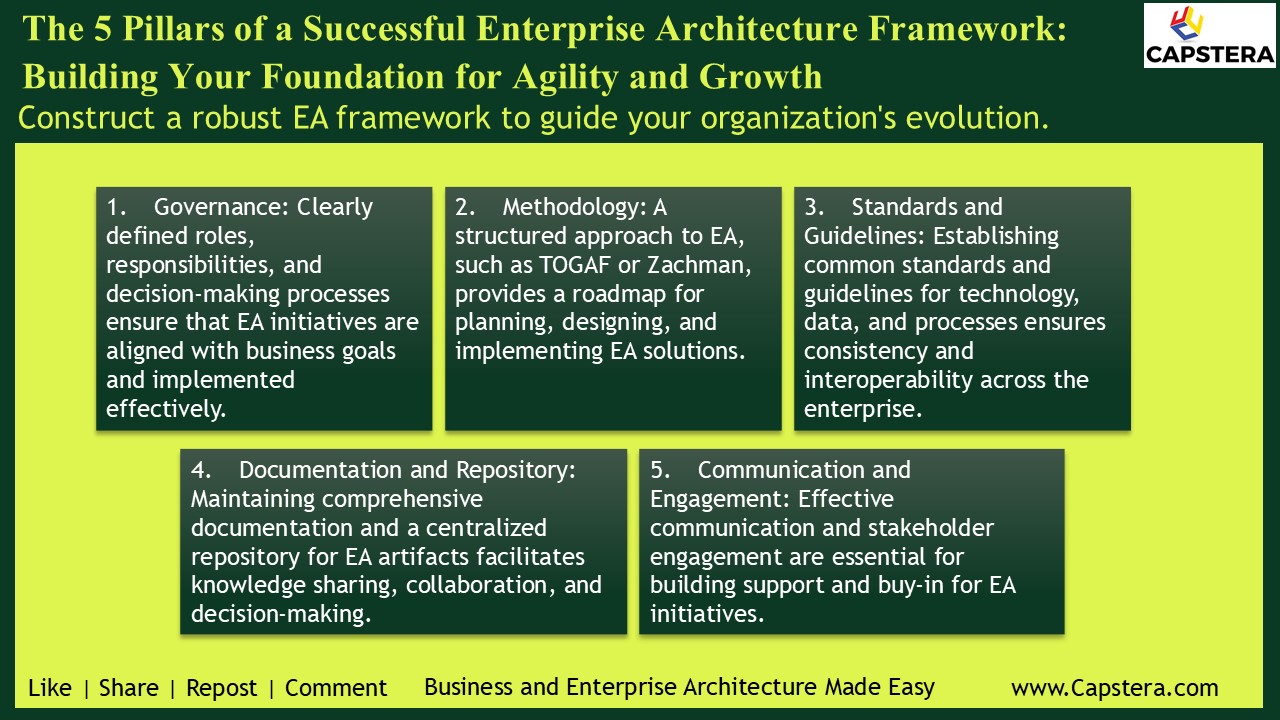
The 5 Pillars of a Successful Enterprise Architecture Framework: Building Your Foundation for Agility and Growth
Construct a robust EA framework to guide your organization’s evolution.
A well-structured Enterprise Architecture (EA) framework is the cornerstone of a successful EA practice. These five pillars provide the foundation for building a resilient and adaptable framework:
- Governance: Clearly defined roles, responsibilities, and decision-making processes ensure that EA initiatives are aligned with business goals and implemented effectively.
- Methodology: A structured approach to EA, such as TOGAF or Zachman, provides a roadmap for planning, designing, and implementing EA solutions.
- Standards and Guidelines: Establishing common standards and guidelines for technology, data, and processes ensures consistency and interoperability across the enterprise.
- Documentation and Repository: Maintaining comprehensive documentation and a centralized repository for EA artifacts facilitates knowledge sharing, collaboration, and decision-making.
- Communication and Engagement: Effective communication and stakeholder engagement are essential for building support and buy-in for EA initiatives.
By focusing on these five pillars, you can build a robust and flexible EA framework that supports your organization’s agility, growth, and long-term success.
